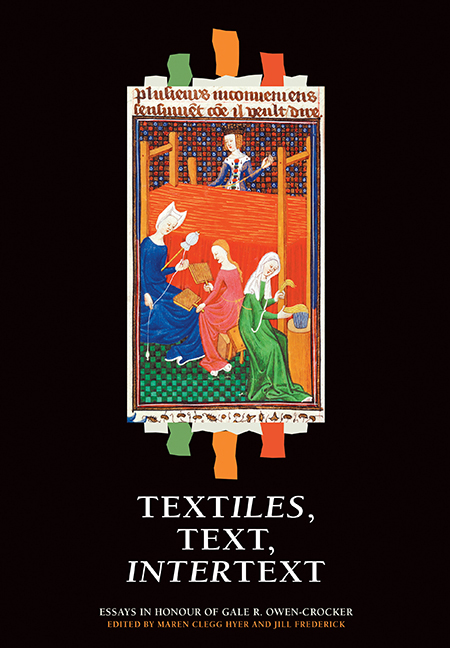41 results
6 - Law and Religion
-
-
- Book:
- The Cambridge Comparative History of Ancient Law
- Published online:
- 09 May 2024
- Print publication:
- 30 May 2024, pp 231-302
-
- Chapter
- Export citation
Cannabis use and psychotic disorders in diverse settings in the Global South: findings from INTREPID II
-
- Journal:
- Psychological Medicine / Volume 53 / Issue 15 / November 2023
- Published online by Cambridge University Press:
- 23 March 2023, pp. 7062-7069
-
- Article
-
- You have access
- Open access
- HTML
- Export citation
Urbanicity and rates of untreated psychotic disorders in three diverse settings in the Global South
-
- Journal:
- Psychological Medicine / Volume 53 / Issue 14 / October 2023
- Published online by Cambridge University Press:
- 16 January 2023, pp. 6459-6467
-
- Article
-
- You have access
- Open access
- HTML
- Export citation
Use of kinase inhibitors against schistosomes to improve and broaden praziquantel efficacy
-
- Journal:
- Parasitology / Volume 147 / Issue 13 / November 2020
- Published online by Cambridge University Press:
- 03 August 2020, pp. 1488-1498
-
- Article
- Export citation
Evaluation of Acetanilide Injury and Its Potential for Yield Reduction in Cabbage, Brassica oleracea L.
-
- Journal:
- Weed Technology / Volume 2 / Issue 3 / July 1988
- Published online by Cambridge University Press:
- 12 June 2017, pp. 350-354
-
- Article
- Export citation
Part III - Intertext
-
- Book:
- Textiles, Text, Intertext
- Published by:
- Boydell & Brewer
- Published online:
- 05 July 2016
- Print publication:
- 18 March 2016, pp 181-182
-
- Chapter
- Export citation
Frontmatter
-
- Book:
- Textiles, Text, Intertext
- Published by:
- Boydell & Brewer
- Published online:
- 05 July 2016
- Print publication:
- 18 March 2016, pp i-iv
-
- Chapter
- Export citation
Index
-
- Book:
- Textiles, Text, Intertext
- Published by:
- Boydell & Brewer
- Published online:
- 05 July 2016
- Print publication:
- 18 March 2016, pp 255-264
-
- Chapter
- Export citation
List of Abbreviations
-
- Book:
- Textiles, Text, Intertext
- Published by:
- Boydell & Brewer
- Published online:
- 05 July 2016
- Print publication:
- 18 March 2016, pp viii-viii
-
- Chapter
- Export citation
List of publications of Gale R. Owen Crocker
-
- Book:
- Textiles, Text, Intertext
- Published by:
- Boydell & Brewer
- Published online:
- 05 July 2016
- Print publication:
- 18 March 2016, pp 17-24
-
- Chapter
- Export citation
Part I - Textile
-
- Book:
- Textiles, Text, Intertext
- Published by:
- Boydell & Brewer
- Published online:
- 05 July 2016
- Print publication:
- 18 March 2016, pp 25-26
-
- Chapter
- Export citation
Tabula Gratulatoria
-
- Book:
- Textiles, Text, Intertext
- Published by:
- Boydell & Brewer
- Published online:
- 05 July 2016
- Print publication:
- 18 March 2016, pp 265-265
-
- Chapter
- Export citation

Textiles, Text, Intertext
- Essays in Honour of Gale R. Owen-Crocker
-
- Published by:
- Boydell & Brewer
- Published online:
- 05 July 2016
- Print publication:
- 18 March 2016
Contents
-
- Book:
- Textiles, Text, Intertext
- Published by:
- Boydell & Brewer
- Published online:
- 05 July 2016
- Print publication:
- 18 March 2016, pp v-vi
-
- Chapter
- Export citation
List of Illustrations
-
- Book:
- Textiles, Text, Intertext
- Published by:
- Boydell & Brewer
- Published online:
- 05 July 2016
- Print publication:
- 18 March 2016, pp vii-vii
-
- Chapter
- Export citation
Part II - Text
-
- Book:
- Textiles, Text, Intertext
- Published by:
- Boydell & Brewer
- Published online:
- 05 July 2016
- Print publication:
- 18 March 2016, pp 119-120
-
- Chapter
- Export citation
Local Treatment of Spasmodic Torticollis with Botulinum Toxin
-
- Journal:
- Canadian Journal of Neurological Sciences / Volume 14 / Issue S3 / August 1987
- Published online by Cambridge University Press:
- 05 January 2016, pp. 533-535
-
- Article
-
- You have access
- Export citation
Contributors
-
-
- Book:
- The Cambridge Dictionary of Philosophy
- Published online:
- 05 August 2015
- Print publication:
- 27 April 2015, pp ix-xxx
-
- Chapter
- Export citation
Contributors
-
-
- Book:
- The Cambridge History of the First World War
- Published online:
- 05 December 2013
- Print publication:
- 09 January 2014, pp xv-xvi
-
- Chapter
- Export citation
12 - Apraxia of speech
- from Part II - Acquired communication disorders
-
-
- Book:
- The Cambridge Handbook of Communication Disorders
- Published online:
- 05 March 2015
- Print publication:
- 24 October 2013, pp -
-
- Chapter
- Export citation



